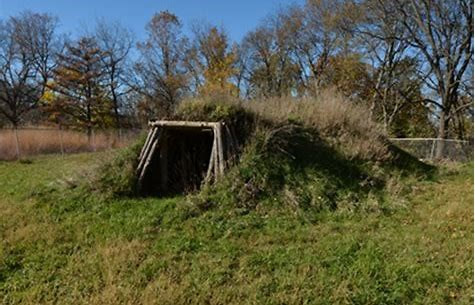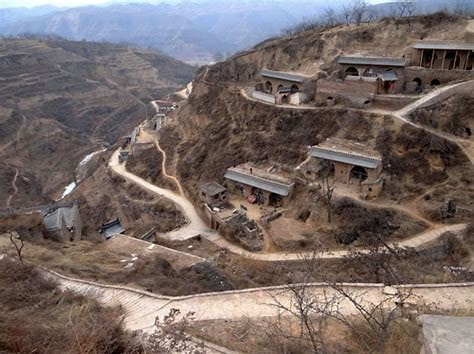|
By Bill Blackburn
(second in a series of Loess Hills articles. Stay tuned for future posts!) Want to cut your energy bills dramatically? Build a loess home. One catch is that you have to be in the Loess Hills region which runs through Western Iowa, or in the Loess Plateau of north central China. Those are the only places where loess soil (generally a mix of wind-blown rock powder and organic humus) is found in deep deposits of 60 to 350 feet sufficient to make noteworthy hills. In both locations, the loess exhibits its unusual structural properties, which are evidenced by sheer cliffs of 50 to 100 feet or more. The material is also a good thermal insulator—cool in summer, warm in winter. So it’s no surprise that over the years, various people of limited means found it good for making homes. Native Americans in the Glenwood, Iowa region and elsewhere in Iowa’s Loess Hills often built earth lodges, with support columns of logs covered with smaller wooden limbs or reeds and then mounded with loess soil and grass. Until a few years ago, a reconstructed lodge of this type could be seen at Glenwood Lake Park. Early pioneers to Western Iowa often created “dugouts” burrowed into a loess hillside, with a wooden front wall with door and maybe a window, and ceiling support timbers. The excavations of several pioneer dugouts—a former blacksmith shop, a barn and a cellar--are still visible at the Green Hollow Center, my nature preserve in northern Fremont County. My father, who grew up in the loess hills near that location in the 1920s and 30s, often visited people living in such structures in the Hollow. He said they were simple dwellings, a bit claustrophobic for new guests, occasionally visited by burrowing wildlife, but pleasantly climate controlled. In the Loess Plateau of northern China, prehistoric peoples were living in underground loess dwellings as early as the Chinese Bronze Age, the second millennium BC. It’s estimated that loess homes, called yaodongs or “cave houses” are still being used by an estimated 40 million Chinese. Three types of yaodongs can be found. Cliffside yaodongs are dug into the side of a loess cliff, creating a flat floor and arched roof. The front of the cave has one to three holes for lighting and ventilation. Sunken yaodongs or “pit yards” are constructed by digging a large square pit that serves as a courtyard, then excavating caves into the sides of the pit. The pit is reached by an excavated ramp, or if the pit wall is not far from a cliff, by a tunnel excavated from outside the cliff through the pit wall. Hoop yaodongs are arched structures formed with most or all of the dwelling on top of the ground. As with Native American earth lodges, loess covers the outside of the hoop yaodongs, but the Chinese version often features windows high in the arch to allow light and the warmth of the sun in winter. The inside walls of yaodongs are often plastered with white lime, and the outside may have a façade of stones or brick. Yaodongs have had their place in important events in Chinese history. In 1556, an earthquake centered on the Loess Plateau in China’s Shaanxi province killed over 800,000 residents, many of whom died in collapsed yaodongs. The most famous yaodongs are those in Yan’an, which served as headquarters for Mao Zedong and his Communist leaders during the 1935-1948 resistance movement. In China, loess homes continue to be popular. With the age of “eco-design” in the U.S., perhaps we’ll see their return to the Loess Hills of Western Iowa. What’s old is new.
1 Comment
|
Archives
June 2024
Categories
All
|
Address712 South Highway Street
P.O. Box 189 Oakland, IA 51560 |
ContactPhone: 712-482-3029
General inquiries: [email protected] Visit our Staff Page for email addresses and office hours. |



 RSS Feed
RSS Feed